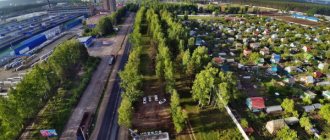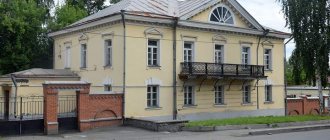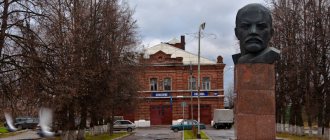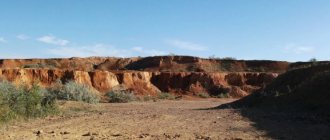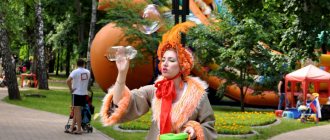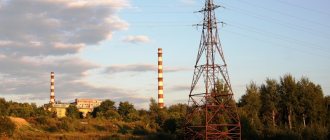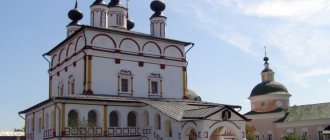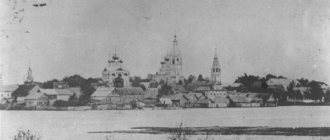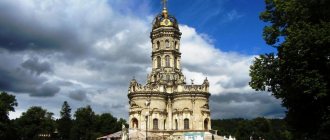Kovrov is a unique city of its kind, in which Russian history and modernity are closely intertwined.
The city was founded in 1778. The first settlement on this site was erected thanks to Yuri Dolgoruky, it was named Elifanovka. Later, thanks to Andrei Bogolyubsky, this village was renamed Rozhdestvenskoye. In the sixteenth century, the family estate of the Kovrov princes was located in the village. It was from their surname that the modern name of the city was formed.
The city of Kovrov is famous for its defense industry and heavy engineering, motorcycles, textile production and Kovrov toys.
How to get to Kovrov?
From Moscow you can get to the city by train in about four hours. Trains passing through Kovrov depart from Yaroslavsky, Kazansky and Kursky stations. You can also get to Kovrov through Vladimir, from where there are regular trains to Kovrov.
Buses to the city depart from the bus station in Moscow from the Shchelkovskaya metro station from nine in the morning until almost 11 in the evening, the travel time is about four and a half hours.
By car you can reach the city along the M7 highway.
Carpets from the heights of past years. Abelman Street
We continue virtual mini-tours through the streets and neighborhoods of Kovrov. One of the oldest streets in our city is the former Moskovskaya, it welcomes those arriving at the station. The street has a rich history, but we tried to highlight only the most interesting facts about it and its former and current inhabitants. Go.
Moskovskaya Street began to be called by the name of the leader of the Kovrov Bolsheviks immediately after the revolution: engineer Abelman briefly worked on the construction of a machine gun factory - this is the current plant named after Degtyarev.
At the end of the 19th century, the first Kovrov pavement was laid on Moskovskaya Street. Every house here is a story. In house number 1, where the Posyltorg store is now, a factory-kitchen was opened in the 30s of the 20th century - residents of the neighboring communal house, known as the “fifth house,” dined here. Later, the Kovrov restaurant appeared in this house, renamed Rossiya.
On the contrary, in house number 2, where today there is a cafe and a culinary shop, the best tavern in the city was located; they sold bread and rolls here. Symbolic.
House number 7 was built by the head of the Kovrov railway workshops, Oscar Schubert; before the revolution, a kind of city club for the local elite operated here. Today, in this two-story mansion built in 1904, there is music school number 1, which “settled” here in the 60s of the last century, taking the place of the former teacher training school.
And near house number 12 there once stood a wooden fire tower: a team of firefighters primarily guarded the property of local merchants - warehouses and shops, which were countless on Moskovskaya Street.
The building of the current gymnasium No. 1 used to house the city secondary school, and during the Great Patriotic War - an infirmary.
The Kovrov Historical and Memorial Museum was the House of the district zemstvo government - in modern terms, the Kovrov administration.
On the site of the Excavator Builders Park, founded in 1927, there was the old Ilinskoye cemetery: victims of the plague epidemic in the 80s of the 18th century were buried here.
Look to the left - this is the city boulevard, popularly nicknamed the “hundred-meter street”. The golden era for him was the 50-60s of the 20th century: in the summer lush flower beds delighted the eye, enthusiasts laid out panels with portraits of leaders from fresh flowers. And the twisted cast iron gratings made by Kovrov craftsmen have miraculously survived to this day.
Next to the House of Children's Creativity, this is the former House of Pioneers. Before the revolution, there was one of the first cinemas in the city; later the Zvezda cinema was opened here. Alas, time has not been kind to him; today the ubiquitous Pyaterochka opened here.
The most beautiful building on Abelmana, 33 is a historical monument of regional significance. The Museum of Weapons will soon open here, and once there was a pharmacy and a branch selling sewing machines.
Next door, in the building of the current Historical Laser Shooting Range, according to legend, a prayer house of either the Catholic or Protestant denomination was opened.
And right behind the current registry office department of the Kovrovsky district administration - on the site of house number 86 - there were the stables of the Fedorovsky estate, in Soviet times they were rebuilt into a residential building...
Shall we continue our city tours?
Share:
- Share
- In contact with
- Classmates
Tagstop Carpets from the heights of past years. media avenue abelman street
Carpets in black and white colors.
There are many large and small cities on the ancient land of Vladimir, of which it is rightfully proud. One of them is Kovrov. The city is a hard worker and craftsman, ranking second in size and industrial significance after the regional center, a city famous for its revolutionary traditions, a garden city.
Kovrov is spread out freely on the banks of the beautiful Klyazma, surrounded by water meadows and light birch copses, wide fields and dense pine forests.
The beauty and bounty of nature attracted people here. More than eight centuries ago, the first Slavic settlement arose here. As the legend goes, the fortress town was called Epifanovka, named after the eldest of the prince’s warriors, who were ordered to maintain a guard post here and supply the prince’s court with game, which was found in abundance in the dense forests.
Years have passed. The Church of the Nativity of the Virgin Mary rose on the steep river bank, and from then on the village that grew here began to be called Rozhdestveno. At the beginning of the 16th century, it came into the possession of the Starodub prince Vasily Kovr and received the name Kovrovo, which has since been found in historical documents. With the establishment of the Vladimir governorship in 1778, the village received the title of a district town. In total, the new city of Kovrov had about 600 inhabitants. Until the middle of the 19th century, it developed slowly and was a quiet provincial outback.
A turning point in the history of the city was the construction of the Nizhny Novgorod Railway, which ran through Kovrov. In June 1861, railway workshops opened here, which were destined to bring glory not only to the Vladimir region, but to all of Russia. Kovrov craftsmen created the first Russian passenger and freight cars, which received the highest awards at the St. Petersburg and Moscow industrial exhibitions in the 70s and 80s.
A mechanical calico and weaving factory, an iron foundry, a tannery and a distillery, and a steam mill appeared in the city.
This was the pre-revolutionary Kovrov.
By the beginning of the 20th century, Kovrov had already become one of the most important industrial centers in the European part of Russia. The number of the Kovrov proletariat reached more than 7 thousand people. He was distinguished by class organization and revolutionary consciousness.
The beginning of the strike movement in the city dates back to the 80s of the last century. In the 90s, revolutionary circles appeared in the railway workshops and at the Treumov textile factory, and in 1903 the Kovrov organization of the RSDLP was created, which launched active political activities to prepare the masses for the coming battles with tsarism. The core of the organization were N. E. Lyakhin, G. A. Astashov, I. K. Gunin, A. Ya. Maleev, V. F. Kangin, I. I. Nikonov, E. N. Vasiliev and others.
Former Bazarnaya Street.
The years of the first Russian revolution became a bright page in the history of the city. The workers of the railway workshops were at the forefront of the revolutionary struggle, and its main headquarters was there. The climax was the October general strike, which put forward serious political demands along with economic ones. Mass demonstrations and rallies were organized in the city, and a militant workers' squad was created. M. V. Frunze came to Kovrov from Ivanovo-Voznesensk more than once. And the first Ivanovo-Voznesensk Council of Workers' Commissioners included eleven natives of Kovrov and Kovrov district.
During the days of the December armed uprising in Moscow, the Kovrov organization of the RSDLP sent a delegate train for communication. But in Orekhovo-Zuevo, the worker delegates were shot by the Cossacks. Driver A. Ya. Maleev and blacksmith I. K. Gunin died heroically. When a delegation of Kovrov revolutionaries went to collect the bodies of their entwined comrades, the Cossacks again met them with a hail of bullets. Member of the strike committee V.F. Kangin, workers Sokolov and Talantov were killed.
But the dark years of reaction did not break the spirit of the Kovrov proletariat. The fight against tsarism continued, the ranks of the Bolsheviks grew. The year 1914 was marked by the largest 33-day strike of textile workers at the Treumov factory. The Kovrovites greeted the February Revolution with a demonstration of ten thousand people. In March 1917, the Council of Workers' Deputies was created, the first chairman of which was the Bolshevik, a teacher at a real school, A. N. Barsukov. The Council began its activities with the widespread introduction of an eight-hour working day. The strength of the Council was in supporting the workers. Its support was the Red Guard detachment created in August 1917.
First performances.
By the time of the Great October Revolution, the Soviet already practically owned all the power in the city. He created a military revolutionary committee, which was headed by the fiery Bolshevik-Leninist machine gun factory engineer N. S. Abelman. Soon he became chairman of the Kovrov organization of the RSDLP(b). On his initiative, a detachment of revolutionary-minded soldiers of the 250th reserve regiment and Red Guard workers was sent to help the revolution in Moscow. As part of a combined detachment of two thousand in the Vladimir province under the leadership of M. V. Frunze, they bravely fought the counter-revolution until the red banner rose over the Kremlin.
In January 1918, a united district Council of Workers', Soldiers' and Peasants' Deputies was organized. N. S. Abelman is elected its chairman. The Kovrovites unanimously delegate him to the V All-Russian Congress of Soviets, held in Moscow, where the leader of the city’s Bolsheviks died heroically while suppressing the rebellion of the left Socialist Revolutionaries.
But the Kovrov workers united their ranks even more closely. They devoted all their strength to the fight against counter-revolutionary actions, to the defense and strengthening of Soviet power. The security officers, who were led by T. Pavlovsky in those years, had many military cases to their name. A volunteer detachment of Kovrov communists, Komsomol members and non-party workers, which formed the backbone of the 2nd People's Vladimir Regiment, fought on the fronts of the civil war and especially distinguished itself on the eastern front, during the capture of Kazan. And in the city there was a stubborn, selfless struggle against hunger, cold, and devastation. Railway workshop workers helped restore transport. In 1922, Treumov’s textile factory resumed operation and was named after N. S. Abelman.
N.S. Abelman
In just two years, textile workers reached pre-war production levels. The plant, called by the revolution and created by the strong hands of the Kovrov workers, grew and gained strength, supplying the young Red Army with the world's first machine guns of the V. G. Fedorov system. He, a general of the tsarist army, a talented inventor, an outstanding Russian scientist, who accepted the revolution with his heart and devoted all his strength and knowledge to it, was the initiator of the creation of this plant in Kovrov, the founder of a design bureau and an exemplary workshop, headed by the gifted self-taught craftsman V. A. Degtyarev , whose name later became known throughout the country.
The first five-year plan. The country, which had become a giant construction site, was in dire need of earthmoving machines, and the first domestic excavators were provided to the USSR by the working city of Kovrov.
At the beginning of 1930, the railway workshops were renamed into a mechanical repair plant, whose task was to restore and repair excavators purchased by the country abroad for gold. Our specialists and craftsmen have grown, and the factory team has become stronger in the fight against difficulties. Its first red director was appointed former Bolshevik turner N.N. Shirokov. The common dream was to create the first Soviet excavator. And his birthday was April 21, 1931. “Kovrovets” is the name of the domestic earth-moving machine. The excavator was semi-rotary, rail-mounted, with a bucket capacity of about two cubic meters. The design of the firstborn was gradually improved. During the years of the first five-year plans, the excavator plant produced 1,253 earthmoving machines.
In those years, Kovrov became a real fortress of the industry. The production of the first Soviet mechanical furnaces for power plants under construction was mastered. The Kovrov plant named after Kirkizh began producing the first Bendix-type automobile starters for the Nizhny Novgorod auto giant. From here came domestic universal sharpening machines, which were superior in quality to those previously imported from abroad.
Old floating bridge over the Klyazma
Treumov Factory
But peaceful work was disrupted by the war. The Kovrovites glorified themselves with unfading exploits on the fronts of the Great Patriotic War. The name of Alexei Lopatin, a former worker at an excavator plant and the head of the 13th border outpost on the Western Bug, has become immortal. In the very first hours of the war, the border guards took on a barrage of Nazi attacks. Nothing could break the tenacity of the Soviet soldiers. Only on the 20th day of this unequal struggle, when the heroes died, did the outpost fall silent. Posthumously A.V. Lopatin was awarded the title of Hero of the Soviet Union. Kovrovets Hero of the Soviet Union V. Yastrebov repeated the unprecedented feat of Alexander Matrosov. Heroes of the Soviet Union I.V. Pershutov, A.P. Generalov, V.A. Burmatov, P.K. Rangev, I.S. Nosov, F.G. Konkov and others covered themselves with heroic glory on the fronts of the Great Patriotic War.
Kovrov became a weapons forge for the Red Army. Here, at the Kirkizh plant, the Hero of Socialist Labor, the remarkable gunsmith designer V.A. Degtyarev, created the famous anti-tank rifle, the combat qualities of which received the highest rating from front-line soldiers and greatly helped to repel the onslaught of fascist tanks. V. A. Degtyarev was awarded the USSR State Prize.
AND I. Maleev
V.F. Kangin
At this glorious enterprise, awarded the Order of the Red Banner of Labor in 1942, the movement of Stakhanovites began, whose motto was: “Two hundred percent - no less - this is the wartime norm!” Here, in September 1941, the country's first front-line Komsomol youth brigade was born under the leadership of Zinaida Lazoreva. By the end of November 1941, 65 front-line brigades were already working at the city’s enterprises, which marked the beginning of the patriotic movement of Soviet youth that swept the entire country.
Home front workers helped the front-line soldiers in every way they could. City residents donated 126 million rubles to the defense fund. Part of these funds went to the construction of tank columns “Kovrovsky Komsomolets” and “Ivanovsky Osoaviakhimovets”. On the initiative of the city party committee, the Kovrov Bolshevik armored train was built and armed in a short time. His team was formed from communists and Komsomol members, which glorified itself in military battles.
In the summer of 1942, workers of the Kirkizh plant took patronage over the 299th Infantry Division of the 10th Reserve Army, which was being formed in Ivanovo. Before being sent to the front, they presented its regiments with five red banners and handed over to the soldiers weapons purchased with the personal funds of the plant workers.
Kovrov was repeatedly awarded the challenge Red Banner of the Central Committee of the All-Union Communist Party of Bolsheviks. For outstanding labor services during the Great Patriotic War, the Kirkizh plant received a second high award in 1945 - the Order of Lenin.
This fact speaks volumes about how firm the Kovrovites’ belief in victory was. In 1944, when the fighting was still raging, the idea was born at the excavator plant to create a new excavator that the country would need for post-war construction. The designers and workers, sparing no effort, worked on the new machine for free during non-working hours. On April 21, 1946, the new D-107 excavator entered factory testing and was soon put into mass production.
The canteen of the railway workshops is the headquarters of the Kovrov revolutionary movement
Since 1949, the Kovrov Excavator Plant was the first among related enterprises to begin exporting products. In July 1966, for the successes achieved in fulfilling and exceeding state plans, the excavator plant was awarded the Order of Lenin, and three years later the E-652B excavator was awarded the State Quality Mark. It was the first product in the region and the first excavator in the country to receive the highest rating. In 1970, a new hydraulically driven excavator passed state tests and was recommended for mass production. In September 1974, mass production of new cars began. At the Degtyarev plant, the creation of a large motorcycle production began in 1945. And today every fourth motorcycle produced in the country is Degtyarev’s.
Kovrov "Voskhod" products are widely popular not only in our country, but also in Cuba, Syria, Iran, Pakistan and other countries where they are exported. Now motorcycle builders are working hard to create an even more modern machine - Voskhod-3. For the successful implementation of the 8th Five-Year Plan, the Degtyarev plant was awarded the third government award - the Order of the October Revolution.
The Kovrovets excavator is the first-born of the domestic excavator industry
If before the revolution there was not a single public library in Kovrov, today there are 69 of them with a total book collection of more than 2 million copies.
There is a Kovrov branch of the Vladimir-Suzdal Historical and Architectural Museum-Reserve and a memorial museum of V. A. Degtyarev. The townspeople spend their leisure time in three cultural centers and a club. About 200 creative amateur groups work here, five of them have been awarded the title of folk. The favorite vacation spot for Kovrov residents is beautiful parks, where traditional public celebrations, concerts, and meetings with notable people and honored guests of the city are held. Over 30 thousand citizens are passionate about physical education and sports. At their disposal are two physical education houses, a winter swimming pool, several stadiums, 25 gyms, 8 shooting ranges, 70 sports grounds, 4 boat stations. Motorsports are very popular in Kovrov, and this is natural, because sports motorcycles are produced here, at the Degtyarev plant. Both among the athletes and among the spectators are those who make them with their own hands. In the vicinity of the city, all-Union motocross races are held annually, attracting thousands of fans. Kovrov cross-sport athletes participate in major international competitions. The hearts of thousands of fans were won by motorball, which appeared in Kovrov relatively recently. Since 1976, the young Kovrov motor-ball team has won the right to compete among the best teams in the country - class “A”. Working Kovrov lives a busy, full-blooded life. Its international connections are growing stronger year by year. Particularly close ties of friendship connect him with his sister city Liberec in the North Bohemian region of Czechoslovakia. In Kovrov there is Liberetskaya Street, and in Liberec there is Kovrovskaya Street. More than 43 thousand Kovrov residents are members of the Soviet-Czechoslovak Friendship Society. The city hosts months of fraternal art, exhibitions, and film festivals. Sister cities regularly exchange delegations, sincerely rejoice at the successes of their friends, and adopt the best practices of communist construction. Kovrov, the city of revolutionary, military and labor glory, is celebrating two hundred years. But he is young and cheerful. Its residents know how to work well and have fun. They look confidently into the future, which they create with their own working hands. Carpets in the photo. Author-compiler K. G. Yakushina Photo by B.A. Ruchkina, E. S. Krekina Artist E. V. Terekhov Editor M. E. Zarkhina Art editor V. D. Demidov Technical editor V. V. Gorshkova Proofreader L. M. Logunova
Worker's Monument
Address: intersection of prsp. Lenina from st. Chernyshevsky.
Monument to G.S. Shpagin
Georgy Semenovich Shpagin (April 17 [29], 1897, village of Klyushnikovo, now Kovrovsky district, Vladimir region - February 6, 1952, Moscow) - Soviet designer of small arms. For the creation of new types of weapons, G. S. Shpagin was awarded the title of Hero of Socialist Labor (1945), and was awarded the Stalin Prize of the second degree (1941). He was awarded three Orders of Lenin, the Order of Suvorov II degree, the Order of the Red Star and medals. A memorial house-museum of G. S. Shpagin was opened in the city of Vyatskie Polyany; a street in this city bears his name. On the mechanical engineering building in the city of Vyatskie Polyany, in honor of the designer, a memorial plaque was installed. Monuments to G. S. Shpagin were erected in two centers of arms production in Russia - the city of Vyatskie Polyany, Kirov Region.
Monument to G.S.
Shpagin in Kovrov. Address: intersection of prsp. Lenina from st. Lepse. In 1985, at the intersection of Lepse Street and Lenin Avenue, a monument to Georgy Semenovich Shpagin, a famous designer of small automatic weapons, was erected.
Together with V.A. Degtyarev G.S. Shpagin created the DShK heavy machine gun. The most significant work of Shpagin is considered to be the PPSh-41 submachine gun, adopted for service in December 1940. Monument to Alexey Vasilyevich Lopatin
Monument to Alexey Vasilyevich Lopatin - Hero of the Soviet Union. Lieutenant - head of the 13th border post (90th Vladimir-Volynsky border detachment, Ukrainian border district, NKVD Border Troops Directorate).
The monument was unveiled on August 29, 2009 on the street. Lopatina.
Monument to Kovrov residents who suffered in radiation disasters
Monument to Kovrov residents who suffered in radiation disasters in Tekstilshchikov Park on Sovetskaya Street. Liquidators of the consequences of the disaster at the Chernobyl nuclear power plant in the Kovrov region and the city of Kovrov
Monument of Nature. Century-old oak tree (about 400 years old) in the park on Sovetskaya Street
Plant named after V.A. Degtyareva
Fountain at the entrance of the plant named after V.A. Degtyareva
Military Glory Square
Stele "City of Military Glory"
The stela “City of Carpets - City of Military Glory” was installed on May 8, 2014 on Military Glory Square in front of the Degtyarev plant. The square is located on Lenin Avenue, near the entrance of the plant named after V.A. Degtyareva. Monument “Rear to Front” at the southern entrances of ZiD
Monument to Komsomol members of the 20s “KOMSOMOLE MEMBERS of the 20s from the Komsomol of the city.”
The monument to Komsomol members is located near the Kovrov State Technological Academy named after V.A. Degtyareva. Address: Kovrov, st. Mayakovskogo, 19
St. Lepse, 4
Square of victory
In August 1956, at the old city cemetery, the remains of soldiers who died in Kovrov hospitals were reburied from individual to one mass grave. 51 people out of 227 buried were identified by name, most remained unknown. A monument was erected at the burial site. But the residents of Kovrov were not happy with the fact that the festive events had to be held in a cemetery, far from the city center. In addition, there was no area near the burial and monument where people could gather. It is forbidden to trample on existing graves. In February 1965, a large group of war veterans appealed to the delegates of the XI city party conference with a request to build a permanent monument in Kovrov to commemorate the Great Victory and the contribution made to it by the Kovrov residents. The request was granted. They also decided to move the remains of the soldiers to the future Victory Square. Early in the morning of May 9, 1965, on the 20th anniversary of the Victory, the remains were removed from the mass grave of the cemetery and placed in a metal sarcophagus. They hoisted it onto a gun carriage, and a tractor, accompanied by a military escort, transported it to the square. The sarcophagus with the remains and cemetery soil was lowered into a niche and covered. A funeral public meeting took place. A gun salute thundered under the Anthem of the Soviet Union. At the same meeting, the foundation stone for the monument was laid, and it was opened on February 23, 1968, on the day of the 50th anniversary of the Soviet Army and Navy. The monument consists of three pyramids made of red polished granite. They are cut through with a bronze wreath-ring, along which the inscription is made: “Remember, living, about the victims of the battles, think about the suffering of the fallen, how they went into the fire to fight for your dreams and ideals. Eternal glory to them who fell in battles for the freedom of our Motherland.” The Eternal Flame burns at the foot, and here is the Mass Grave, in which the defenders of the Motherland who died of wounds in Kovrov hospitals are buried. “While on a well-deserved rest (discharged from the army due to illness in May 1967), on my own initiative I began searching for the names of each of those who died in hospitals. He sent at least a hundred requests to museums, archives, and departments of the Ministry of Defense, used data from military registration and enlistment offices, and messages from relatives of the deceased who came to the city. The difficulty was that no one wanted to help finance the considerable costs. I even had to buy paper, envelopes, and stamps with my meager pension, not to mention the costs of repeated trips to the archives of Moscow, Leningrad, Podolsk and other cities. However, he did not give up on what he had planned, and the matter progressed. By the beginning of 1989, I had a complete list of names of all 227 people who died in our hospitals. Ivan Ivanovich Moshnin and I turned to the director of the electromechanical plant (where we both worked on a voluntary basis) Yu.M. Timofeev with a request to help mark metal plates with the names of soldiers. Yuri Mikhailovich listened to us carefully and said: “Guys, you have conceived a big and necessary thing, I will help you in any way I can.” He emphasized that the slabs should be permanent, for many decades, to which we modestly remarked: “We agree, but there is no money in the veterans’ council.” Nevertheless, the “order” was soon fulfilled. The project for installing slabs on Victory Square was developed by the chief architect of the city K.Yu. Bai, and the installation itself was taken over by the director of the reinforced concrete products plant V.V. Gritsko. The plaques were installed on June 22, 1991, the 50th anniversary of Germany's treacherous attack on the Soviet Union. Vandals have already stolen aluminum slabs and sold them somewhere. The townspeople angrily condemn this barbarity. Undoubtedly, God will punish for this, and law enforcement agencies will still find the criminals” (A. MURINOV, retired major, head of the initiative group to perpetuate the memory of soldiers who died in Kovrov hospitals).
Obelisk in honor of the Kovrov residents who died during the Second World War
Avenue of Heroes
After the news of the attack by Nazi Germany, rallies were held at factories in the city, and on June 23 a citywide rally was held, in which 27 thousand people took part. For the first time during the war, more than 700 Kovrov residents came to the military registration and enlistment office with applications to voluntarily go to the front, and 7,885 people signed up for the created militia units. The Kovrov military registration and enlistment office sent over 19 thousand of our fellow countrymen to the front, 8,360 of them did not return from the battlefields. Many soldiers and officers were awarded orders and medals, and 13 of those who went to the front became Heroes of the Soviet Union. In 2000, on the occasion of the 55th anniversary of Victory in the Great Patriotic War, the Alley of Heroes was opened on the square, perpetuating the memory of fourteen Kovrov residents - Heroes of the Soviet Union.
Monument to Degtyarevites who died during the war
In 1977 on the street. The Socialist Church erected a monument to the Degtyarevites who died during the war. Workers of the plant named after. V.A. Degtyarev are rightfully proud of their special contribution to the defeat of the enemy. Next to the monument there is another memorial - the Mass Grave of the Kovrov partisans who died on Smolensk land.
Oktyabrskaya Square Kovrov
Monument on Oktyabrskaya Square
Square of the 200th anniversary of Kovrov
Square of the 200th anniversary of Kovrov
Memorial stele in honor of the 200th anniversary of the city of Kovrov
Memorial stele in honor of the 200th anniversary of the city of Kovrov
“Our city is proud of them” In 1978, the opening of the main city square took place - the Square of the 200th Anniversary of Kovrov. A memorial stele was erected on the square in honor of the 200th anniversary of the city of Kovrov. The monument is a memorial arch in the form of the Roman numeral II, symbolizing two centuries of Kovrov’s history. At the top are flying banners made of copper, and against their background is the Order of the Red Banner of Labor, awarded to the city for the valiant work of Kovrov residents during the Great Patriotic War.
Monument to Pushkin in the park named after. V.A. Degtyareva Griboedova Street, 15
Sculpture near the building of gymnasium No. 2
“To teachers and school graduates who died during the Great Patriotic War.” Sverdlova street, 13
Kovrovsky railway d. station
Monument to the head of the Moscow-Nizhny Novgorod railway from 1868 to 1893, Ivan Fedorovich RERBERG (1831 - 1917). Opened on July 26, 2012 in the year of the 175th anniversary of the Russian Railways and the 150th anniversary of the Gorky Railway. The sculptor of the monument is Honored Artist of the Russian Federation, member of the Union of Artists of Russia Viktor Ivanovich Purikhov. The project architect is the chief architect of the Nizhegorodzheldorproekt Nizhegorod Design Institute - a branch of Roszheldorproekt OJSC, Tatyana Petrovna Kozlovich.
Pushkin Park: - Monument on the grave of Degtyarev Vasily Aleseevich; — Monument to Russian soldiers of the First World War; — Monument to Pushkin; — Cross in memory of the Kovrov princes. KEZ Park: - Monument to Lenin on Freedom Square; — Monument to the excavator. Park named after V.A. Degtyareva: — Monument to Pushkin. Square on Abelman Street: - Monument to V.A. Degtyarev; — St. George Memorial Chapel to combat veterans. House of Culture of the city of Kovrov. Archaeological monuments of the Kovrov region.
City of Kovrov.
Old photos of Kovrov
Kovrov, the City of Military Glory, is the administrative center of the Kovrov district and the second (after Vladimir) city in the Vladimir region by population - 138,552 people (2017). Kovrov is located on both banks of the Klyazma River, 64 km northeast of Vladimir. The city is a major railway junction on the Moscow (250 km to Kovrov) – Nizhny Novgorod highway, and has access to the M-7 Volga highway.
Story
Although Kovrov received city status only about 240 years ago, its age is much more respectable. According to legend, in 1157, the Vladimir prince Andrei Bogolyubsky, returning in winter from Suzdal to Starodub (now the village of Klyazminsky Gorodok, Kovrov district), got lost in the local forests and accidentally came to the hut of the trapper Elifan. In honor of the miraculous salvation of the prince at Christmas, a wooden Church of the Nativity of Christ was cut down on the high Klyazma bank. After the name of this temple, the village of Elifanovka located here began to be called the village of Rozhdestvenskoye. In the 13th century. The village became part of the Starodub principality.
From the end of the 15th century. Rozhdestvenskoye passes into the possession of the Starodubsky-Kovrov princes. The nickname of the princely family of Starodubsky “Carpets”, according to legend, appeared with the light hand of Prince Dmitry Donskoy after during the Battle of Kulikovo in 1380 A.F. Starodubsky carried the Khan's expensive carpet out of the enemy camp. It was this princely nickname that gave the new name to the Rozhdestvensky village - Kovrovo.
In 1567, the village of Kovrovo was donated by Prince I.S. Kovrov to the Suzdal Spaso-Evfimiev Monastery ,
and was in his patrimony for more than two centuries - until 1774. The area around the village was rich in limestone deposits, the development of which has long been one of the main occupations of the Kovrov residents. In particular, the buildings of the Spaso-Evfimiev and Pokrovsky monasteries in Suzdal were erected from Kovrov white stone.
The village of Kovrovo had a fairly advantageous location on the banks of the navigable Klyazma River. In this place there was a constant transport through Klyazma on the busy Nizhny Novgorod trade route. A trade transhipment pier was created near the village of Kovrovo, where bread, fish, salt and other products, forest materials, and handicrafts were brought from everywhere.
All this contributed to the acquisition of urban status by the village of Kovrov. On September 1, 1778, Empress Catherine II signed a decree establishing the district town of Kovrov in the Vladimir governorship. In 1781, it already had its own coat of arms as a city privilege. There is a legend that the Tsar's governor, Count Vorontsov, was very fond of hunting hares in the Kovrov forests. It was he who proposed to depict these animals on the Kovrov coat of arms next to the emblem of Vladimir - the lion.
Until the middle of the 19th century. Kovrov was a quiet provincial town. The industrial and commercial development of the city was facilitated by the construction of the Nizhny Novgorod railway, traffic on which was opened in 1862. At the same time, central railway workshops appeared in Kovrov, which became famous in Russia. Here, freight and passenger cars were created, which were awarded at the end of the 19th century. highest awards at industrial exhibitions in Moscow and St. Petersburg. In addition, the first ambulance trains were produced in the Kovrov workshops. During the First World War, Kovrov was one of the formation points for military ambulance trains, each of which could receive up to 400 wounded. In 1929, the railway workshops were repurposed into a mechanical repair plant, which carried out orders for the repair of imported excavators, and in 1931 - into the Kovrov Excavator Plant, which became the first manufacturer of domestic Kovrovets excavators.
By the beginning of the 20th century. Kovrov had already become a major industrial center of the Vladimir province with a population of 14,571 people (according to the results of the first All-Russian census of 1897). Along with the railway workshops, a large steam-powered calico and weaving factory of the merchant I.A. operated in the city. Treumova, an iron foundry, numerous brick factories, a steam mill, a sawmill.
In 1916, construction began on the Kovrov Machine Gun Plant. The real development of the plant since 1918 was associated with the activities of the outstanding scientist V.G. Fedorov, the inventor of the world's first assault rifle, and the outstanding designer of automatic weapons V.A. Degtyarev, who headed the plant’s design bureau until his death in 1949. There is a memorial house-museum of V.A. in Kovrov. Degtyarev, whose exhibition tells about his life and design activities. In 1949, the plant received a new name - Plant named after. V.A. Degtyarev (today it produces not only defense, but also civilian products, for example, motorcycles). During the Great Patriotic War, the plant became the country's main enterprise for the production of anti-tank and other types of weapons for the front.
Carpets during the Great Patriotic War
It is difficult to overestimate Kovrov's contribution to the Great Victory. 13 Heroes of the Soviet Union brought glory to the city (L.V. Lopatin, I.S. Nosov, V.A. Burmatov, I.V. Pershutov, F.G. Konkov, V.I. Yastrebtsov, A.P. Generalov, P.K. Rangev, V.G. Kabanov, P.S. Mashtakov, V.A. Zaevsky, A.P. Martynov, G.V. Provanov). All large enterprises of Kovrov were reoriented towards military production. There were many hospitals in the city, since it was located in the rear near the front line. In November 2011, by decree of the President of the Russian Federation, Kovrov was awarded the honorary title “City of Military Glory.” In November 2013, on the square in front of the central entrance of JSC Plant named after V.A. Degtyarev" stele "City of Military Glory" was installed.
In 2012, in connection with the awarding of this title to Kovrov, it was decided to adjust the coat of arms taking into account the recommendations of the Heraldic Council under the President of the Russian Federation. Instead of a red ribbon, the coat of arms is now surrounded by a white and blue order ribbon - a sign that in 1978 Kovrov was awarded the Order of the Red Banner of Labor. The golden tower crown with five teeth is an indicator of the status of the urban district. The swords crossed behind the crown symbolize the title “City of Military Glory” awarded to Kovrov.
Economy
Modern Kovrov is a large industrial and scientific center of Russia, primarily in the defense industry, mechanical engineering and metalworking. Enterprises in these industries create over 70% of the city’s total industrial output and employ about 40% of the city’s working population.
OJSC "Plant named after Degtyarev" (ZiD) today is a diversified enterprise that produces not only defense products (small arms, anti-tank and missile weapons), but also motor vehicles (motorcycles, motorized towing vehicles, scooters), soil-cultivating equipment, food industry equipment, LED lamps. PJSC Kovrov Mechanical Plant (KEP) is one of the leading enterprises in the Russian nuclear industry, since 2007 specializing in the manufacture of high-tech and technically complex products - gas centrifuges (devices for separating uranium isotopes). The main specialization of OJSC Kovrov Electromechanical Plant (KEMZ) is hydraulic equipment, and the plant also produces multifunctional mobile robotic systems, used, in particular, for searching and remotely neutralizing explosive devices. In 2022, KEMZ began production of a new model range of Zetor Forterra (“ANT 4135F”) tractors as part of the import substitution program. VNII "Signal" is engaged in the development and production of defense hydraulics and electronics. Design Bureau "Armatura", since 1997 part of the State Space Research and Production Center named after. M.V. Khrunichev, works in the field of development and manufacturing of units and systems of ground infrastructure of rocket and space complexes, as well as pneumatic hydraulic systems of launch vehicles.
Among the light industry enterprises in Kovrov there are such well-known in Russia, producing men's suits, "Ascona" - the largest manufacturer of orthopedic mattresses, etc. In the 1990s, the ancient pottery craft was revived, in 1993 the Kovrov Clay Toy factory was founded, received the status of folk art.
Famous people
The names of many famous people of Russia are associated with the city of Kovrov. Famous gunsmith designers V.A. lived and worked here. Degtyarev (1879/1880-1949), V.G. Fedorov (1874-1966), G.S. Shpagin (1897-1952). A native of Kovrov was I.M. Yatsunsky (1916-1983), Soviet scientist, one of the creators of the first artificial Earth satellite, is recognized as the founder of space geodesy. Born in Kovrov: A.M. Kolesov (1834-1902), Russian portrait painter; S.K. Nikitin (1926-1973), famous Soviet writer; A.P. Nepomniachtchi (1968-2007), popular bard, rock musician, etc.
Sports resort Dobrograd
Today, of interest to tourists and guests of Kovrov is the Dobrograd sports resort, which is located on the territory of one of the first private cities in Russia and is a unique object of public-private partnership. In September 2016, the VI International Sports Forum “Russia – a Sports Power” was held in Dobrograd.
Source
